
Tires are undeniably one of the most critical, yet often overlooked, components of any vehicle. They are the sole point of contact with the road, underpinning everything from your car’s performance and safety to its handling and fuel efficiency. With a set of four tires easily costing over $1,000 these days, replacing them prematurely can significantly impact your wallet, not to mention the inconvenience it brings.
Far too many drivers find themselves replacing tires sooner than necessary, often due to a lack of awareness regarding proper care. The good news is that you don’t need to be a certified mechanic or invest in the most expensive brands to get thousands more miles out of your existing tires. Instead, a little regular maintenance and a few smart driving habits can make a dramatic difference, effectively doubling their lifespan and saving you a considerable amount of money in the long run.
This in-depth guide, informed by specialists, is designed to empower you with actionable advice and practical solutions. We’ll break down the essential steps, providing insights that even seasoned drivers might not know, to help you get the absolute most out of your tires, ensuring a safer, smoother, and more economical ride for years to come. Let’s dive into these crucial tips and transform the way you think about tire care.

1. **Regularly Check Tire Pressure (But Do It Right)
Maintaining proper tire pressure is not just a recommendation; it’s the fundamental cornerstone of tire longevity and vehicle safety. When your tires are inflated to the precise levels recommended by your vehicle’s manufacturer, you ensure that the entire surface of the tread makes consistent contact with the road. This even distribution of pressure prevents premature wear patterns that often plague underinflated or overinflated tires.
Consider what happens with improper inflation. Underinflated tires tend to wear out faster on the shoulders because the outer edges end up doing most of the work, while the center barely touches the road. This creates an uneven wear pattern, drastically shortening the tire’s life and compromising grip, especially in wet or icy conditions. Conversely, an overinflated tire bulges in the center, causing that area to bear the brunt of the road contact and wear out much quicker than the rest of the tread. Neither scenario is conducive to maximum tire life or optimal safety.
Beyond wear, proper inflation directly impacts your car’s fuel efficiency. Underinflated tires create increased rolling resistance, forcing your engine to work harder just to keep the car moving. This extra effort translates directly into burning more fuel, so correcting your tire pressure can lead to a small but noticeable improvement at the gas pump. It’s a simple adjustment that benefits both your wallet and the environment.
Checking your tire pressure properly is key. Tires naturally lose about 1-2 PSI per month, and this loss speeds up with temperature fluctuations—dropping roughly 1 PSI for every 10°F decrease in temperature. Therefore, it’s essential to check your tires at least once a month and definitely before any long trips. For the most accurate reading, always check your tires when they are cold, meaning before driving or after they’ve been sitting for a few hours. Use a quality digital or high-quality gauge, as cheap gauges can be inaccurate. The correct PSI number for your vehicle is found on a sticker inside the driver’s door jamb, or in your owner’s manual, not the maximum pressure listed on the tire sidewall.

2. Rotate Your Tires Regularly
Tire rotation is another indispensable habit for extending tire life, driven by the simple fact that tire wear is rarely uniform across all four positions on a vehicle. Front tires, particularly on front-wheel-drive vehicles, typically bear the brunt of steering, braking, and most of the vehicle’s weight, causing them to wear faster than their rear counterparts. This uneven stress leads to varied wear patterns if tires remain in the same position indefinitely.
The purpose of regular rotation is to ensure that each tire experiences the different stresses and wear patterns associated with each wheel position. By systematically moving tires to new positions at recommended intervals, you help them wear more evenly, which in turn leads to better performance, a significantly longer lifespan for the entire set, and fewer unexpected surprises or costly replacements.
Most experts recommend rotating your tires every 5,000 to 8,000 miles, or conveniently, with every oil change. The specific rotation pattern depends on your vehicle’s drivetrain and tire type. For non-directional tires with same-size fronts and rears, a common “Front to Back, Back to Front” pattern involves moving front tires straight to the back and rear tires straight to the front, without switching sides. This effectively redistributes the workload and balances wear.
Other common rotation patterns include the “Side-to-Side” method, which swaps tires from the left side to the right to even out wear from alignment quirks or sloped roads. For rear-wheel-drive cars with non-directional tires, the “Rearward Cross” pattern moves rear tires straight to the front, while front tires move to the rear but cross sides (e.g., front-left to rear-right). All-wheel-drive cars, where all four tires experience similar but varied wear, often benefit from an “X-Pattern” where every tire moves diagonally (front-left to rear-right, etc.). Front-wheel-drive cars, with their high front-tire stress, are often best served by the “Forward Cross,” moving front tires straight back on their side and rear tires to the front but crossing sides.
It’s crucial to acknowledge directional tires, which are designed to roll in only one specific direction, indicated by an arrow on the sidewall. These cannot be simply crossed over; they must remain on the same side and only be moved front to back. If you have a full-size spare, incorporating it into a “Five-Tire Rotation” cycle ensures it doesn’t age out unused and helps distribute wear even further across five tires, maintaining the entire set in good condition. Regular check-ins during rotation also provide an excellent opportunity to inspect for irregular wear patterns, cracks, bulges, or embedded road debris, catching small issues before they escalate into major problems.
Read more about: The Shocking Truth About Car Repair Costs: 14 Expensive Fixes That Can Drain Your Wallet

3. **Balance Your Tires Properly
Properly balanced tires contribute significantly to a smoother, more comfortable ride, and are absolutely essential for preventing uneven tread wear and undue strain on your vehicle’s suspension components. When a tire and wheel assembly is unbalanced, it means the weight is unevenly distributed around the circumference of the wheel. Even a slight imbalance can have noticeable and detrimental effects, particularly as speeds increase.
The most common symptom of unbalanced tires is vibration, which you often feel in the steering wheel, floorboard, or seats, especially when driving at highway speeds. This vibration isn’t just an annoyance; it’s a clear indication that the tires are not rolling smoothly. Over time, this constant wobbling action causes parts of the tread to wear down faster than others, leading to premature tire replacement. Moreover, these vibrations transfer through your suspension system, accelerating wear on critical components like ball joints, wheel bearings, and shock absorbers, costing you more in repairs down the line.
The tip here is straightforward: have your tires balanced whenever you notice vibration at highway speeds or after installing new tires. It’s also a smart practice to consider balancing your tires every time you rotate them. This proactive approach ensures that any minor imbalances that develop over thousands of miles are corrected before they cause significant damage or discomfort. When getting your tires balanced, you might encounter the terms static and dynamic balancing. Dynamic balancing, which uses weights on both the inner and outer edges of the wheel, offers a more thorough and precise correction compared to single-edge (static) balancing, leading to an even smoother ride and better wear prevention.
Read more about: Beyond the Glamour: When Film Productions Become ‘Problem Children’ and Test Every Crew’s Mettle
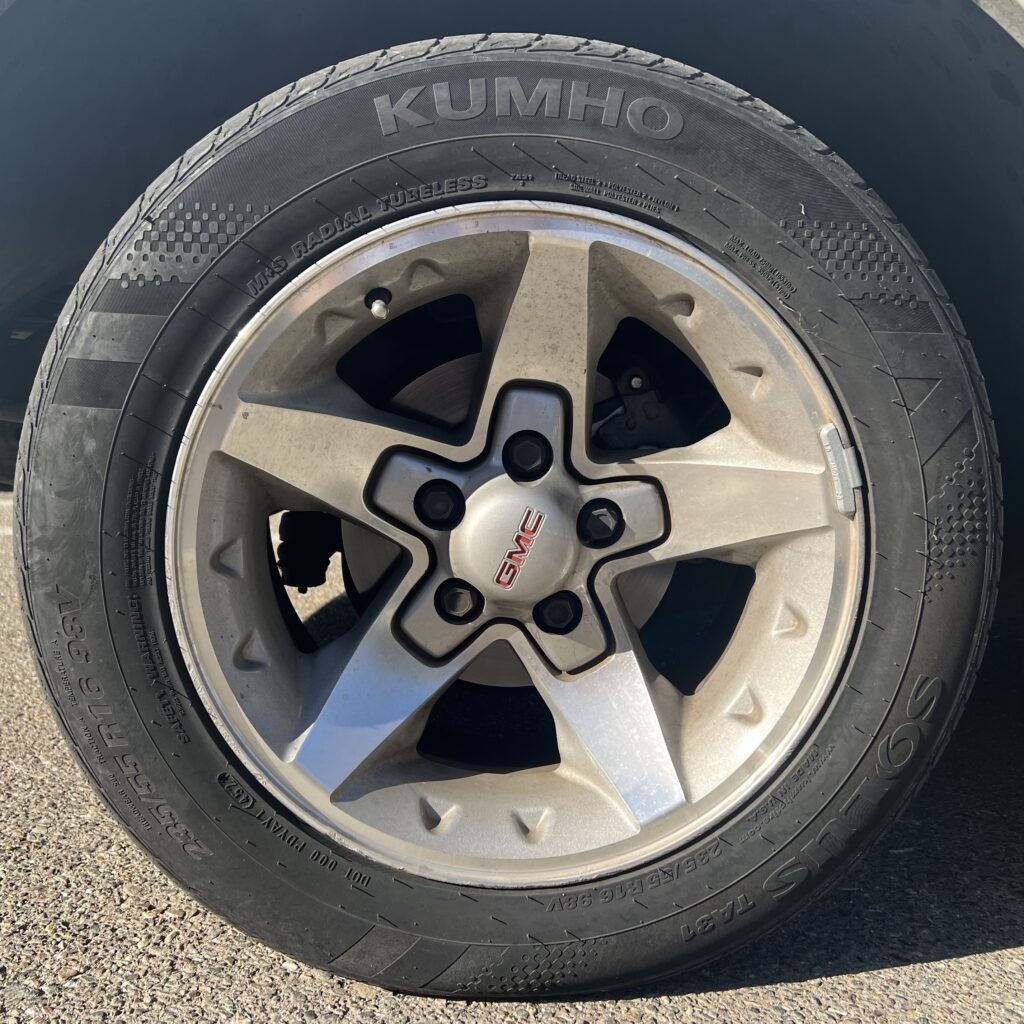
4. **Keep Your Wheels Aligned
Wheel alignment is one of those crucial maintenance items that often flies under the radar for many drivers, yet it holds immense importance for both tire longevity and vehicle handling. Essentially, alignment refers to the precise angles at which your tires and wheels are set relative to your vehicle and the road. When your wheels are correctly aligned, your tires meet the road at the proper angle and pressure, ensuring they roll straight and true.
If your wheels are even slightly out of alignment, your tires won’t sit perfectly square on the road. This seemingly minor discrepancy can lead to severe and uneven tread wear patterns, such as feathering, camber wear (one side of the tire wearing faster), or toe wear (scrubbing across the road). Over time, these incorrect angles will literally chew through your tire tread much faster than normal, dramatically shortening their lifespan and forcing you to replace them prematurely. The insidious part is that you might not even notice the problem until the wear is well advanced.
Beyond tire wear, poor alignment significantly impacts your car’s handling and safety. You might experience your car pulling consistently to one side, forcing you to constantly correct the steering wheel to keep it going straight. The steering wheel itself might not be centered when you are driving straight, or you could feel unusual vibrations. These symptoms not only make for a less comfortable driving experience but also compromise your ability to maintain control, especially during emergency maneuvers or in adverse weather conditions.
A specialist’s tip is to get a wheel alignment annually, or immediately if you notice any of the warning signs like pulling, a vibrating steering wheel, or unusual tire wear. Also, if you hit a significant pothole or curb, it’s wise to have your alignment checked promptly, as such impacts can easily throw off the delicate settings. Even for front-wheel-drive vehicles, opting for a 4-wheel alignment is often beneficial, as it ensures all four wheels are properly synchronized, further improving handling and maximizing tire life.
Read more about: The Platinum Pain: 15 Luxury Vehicles That Secretly Punish Their Owners with Sky-High Costs

5. **Avoid Sudden Starts and Stops
Your driving habits have a far more profound impact on tire longevity than many realize. While regular maintenance addresses the mechanical aspects, the way you interact with your vehicle directly influences the wear and tear your tires endure daily. Aggressive driving—characterized by quick acceleration, hard braking, and sharp, high-speed turns—is a primary culprit in accelerating tread wear and shortening tire life.
When you stomp on the accelerator, particularly from a standstill, you generate immense friction between the tire and the road. This sudden surge of power causes the tire to scrub and spin, especially if traction control isn’t perfectly managed. This action rapidly wears down the rubber, not just evenly but often creating flat spots or localized areas of intense abrasion. Similarly, slamming on the brakes brings your vehicle to a halt by forcing the tires to abruptly convert kinetic energy into heat and friction, which is highly abrasive on the tread and can lead to uneven wear patterns.
The good news is that modifying these habits is entirely within your control and costs nothing. Specialists recommend easing into acceleration, applying the throttle gradually rather than abruptly. When it comes to braking, maintain a safe following distance that allows you to anticipate stops and brake gently and progressively. This smooth deceleration not only protects your tires but also improves overall fuel economy and reduces strain on your vehicle’s braking system.
Furthermore, avoid cornering at high speeds whenever possible. Taking turns gently and at appropriate speeds minimizes the lateral stress placed on the tire sidewalls and tread blocks. This prevents the rubber from being unduly distorted and scrubbed, which contributes to premature wear and heat buildup. Even using lower gears when descending hills can reduce your reliance on heavy braking, further preserving your tires. Smooth driving isn’t just about saving your tires; it cultivates a safer, more comfortable, and more fuel-efficient driving experience.
Read more about: The Ultimate Road Trip Safety Playbook: 12 Non-Negotiable Rules to Keep Your Journey Smooth and Secure for Every Driver

6. **Check Tread Depth Often
The tread on your tires isn’t just for aesthetics; it’s a meticulously designed component crucial for providing traction, channeling water away from the contact patch, and ensuring safe handling. Regularly checking your tire tread depth is therefore a critical step in proactive tire maintenance, allowing you to monitor wear, identify potential issues, and know precisely when it’s time for replacement. Worn tread significantly reduces traction, especially in wet conditions, greatly increasing the risk of hydroplaning and compromising braking performance.
The simplest and most common method for checking tread depth is the penny test. To perform this, take a U.S. penny and insert it into a tire tread groove with Lincoln’s head facing down and towards you. If you can see the very top of Lincoln’s head, it means your tread depth is at or below 2/32 of an inch, which is generally considered the legal and safety limit for tire replacement in many regions. If you live in an area with plenty of precipitation, or regularly drive in wet or snowy conditions, you may want to consider replacing your tires a bit sooner, perhaps when Lincoln’s head is still partially visible but approaching the danger zone, as winter tires may need replacing at 4/32 of an inch.
For a more precise and consistent measurement, investing in a dedicated tread depth gauge is highly recommended. These inexpensive tools provide an accurate numerical reading, allowing you to track wear more effectively over time and make informed decisions about tire replacement. Regardless of the method you choose, it’s vital to check tread depth in multiple locations across each tire. Tread wear can vary significantly across the tire’s width and circumference, often signaling underlying issues like improper inflation, misalignment, or suspension problems. Spotting uneven wear early can prompt investigation into these mechanical issues, potentially saving you from greater repairs or an unexpected breakdown.
Read more about: The Unsung Blockbusters: Why These Films, Scorned by Critics, Became Undeniable Fan Favorites

7. **Avoid Overloading Your Car
While modern vehicles are designed to be robust, every car has a specific weight limit that its components, including its tires, are engineered to handle safely and efficiently. Exceeding this limit by overloading your car is a surefire way to place undue stress on your tires, leading to premature wear and significantly increasing the risk of dangerous blowouts. It’s a habit that can compromise not only the life of your tires but also the overall safety and handling of your vehicle.
Extra weight, whether from passengers, heavy cargo, or towing a trailer beyond capacity, forces your tires to work harder. This increased workload translates into several detrimental effects. Firstly, it generates excessive heat within the tire, which can cause the rubber compounds to break down faster and weaken the internal structure. Secondly, it distorts the tire’s shape, causing the contact patch with the road to become uneven, leading to accelerated and irregular tread wear. In severe cases, extreme overloading can even lead to sudden tire failure or a blowout, which can result in a loss of control, especially at highway speeds.
To avoid this critical mistake, you need to know your vehicle’s Gross Vehicle Weight Rating (GVWR) or maximum load limit. This essential information is typically found on a sticker located on the driver’s side door frame or within your vehicle’s owner’s manual. It specifies the maximum allowable total weight of the vehicle, including the weight of the vehicle itself, all occupants, fuel, and cargo. Never exceed this limit.
Truck owners or those who frequently haul heavy items are most susceptible to getting anywhere close to their vehicle’s weight limits. If you regularly carry heavy loads, it’s also important to redistribute the weight evenly across the vehicle to avoid putting disproportionate stress on one side or axle. Additionally, a simple habit of avoiding storing unnecessary heavy items in your trunk can contribute to keeping your vehicle lighter overall, thereby reducing the constant stress on your tires. Being mindful of your load is a straightforward yet highly effective way to protect your tires and ensure a safer journey.
Read more about: Beyond the Glamour: When Film Productions Become ‘Problem Children’ and Test Every Crew’s Mettle
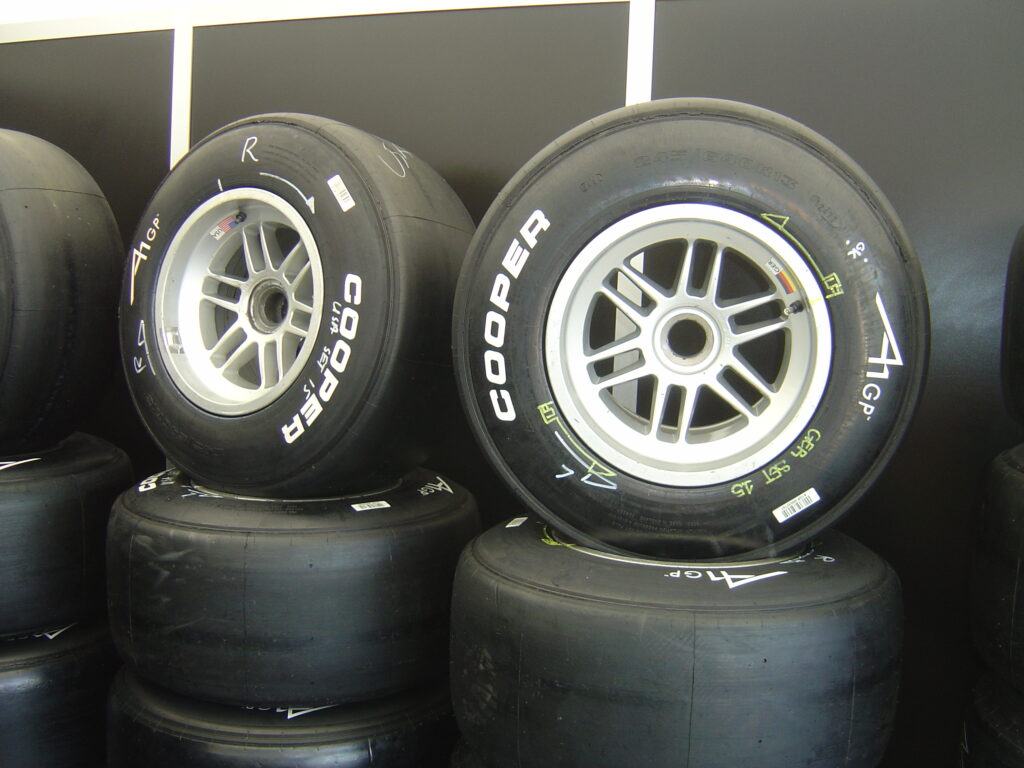
8. **Store Tires Properly During Off-Season
For many drivers, managing seasonal tires—be it dedicated winter rubber for icy conditions or high-performance summer tires—is a necessary part of vehicle ownership. However, simply tossing your off-season set into a corner of the garage is a missed opportunity to significantly extend their life. Improper storage exposes tires to elements that can rapidly degrade the rubber compounds, rendering them less effective and accelerating their demise.
The reason this matters so much is the differing environmental tolerances of tire types. Summer tires, for instance, are designed with compounds that can become brittle and crack in cold temperatures, especially below 45°F (7°C). Conversely, winter tires, with their softer compounds formulated for grip in freezing conditions, will wear out quickly and perform poorly when subjected to the heat of summer pavement. Storing them incorrectly during their ‘off-season’ directly undermines their designed lifespan and performance.
To combat this, specialists recommend a systematic approach to off-season tire storage. Begin by thoroughly cleaning each tire, removing all road salt, brake dust, and grime. A simple wash with soap and water, followed by complete drying, prevents corrosive elements from slowly deteriorating the rubber over months of inactivity. This initial step is often overlooked but crucial for preserving the integrity of the tire’s surface and structure.
Once clean and dry, store your tires in a cool, dry, and dark environment. Direct sunlight, with its UV rays, and fluctuating temperatures are rubber’s worst enemies, causing it to harden, crack, and lose elasticity over time—a condition known as dry rot. A basement, climate-controlled garage, or dedicated tire storage facility are ideal. Using opaque tire bags or covers can provide an extra layer of protection against light and dust, further safeguarding the rubber from environmental stressors.
Finally, consider how you position your tires. If storing tires mounted on wheels, it’s best to stack them horizontally or hang them on wall racks to prevent flat spots. For unmounted tires, standing them upright and rotating them slightly every few weeks helps distribute pressure evenly, preventing localized deformation. These simple practices ensure your specialized tires are ready for optimal performance when their season arrives, preventing premature aging and costly replacements.
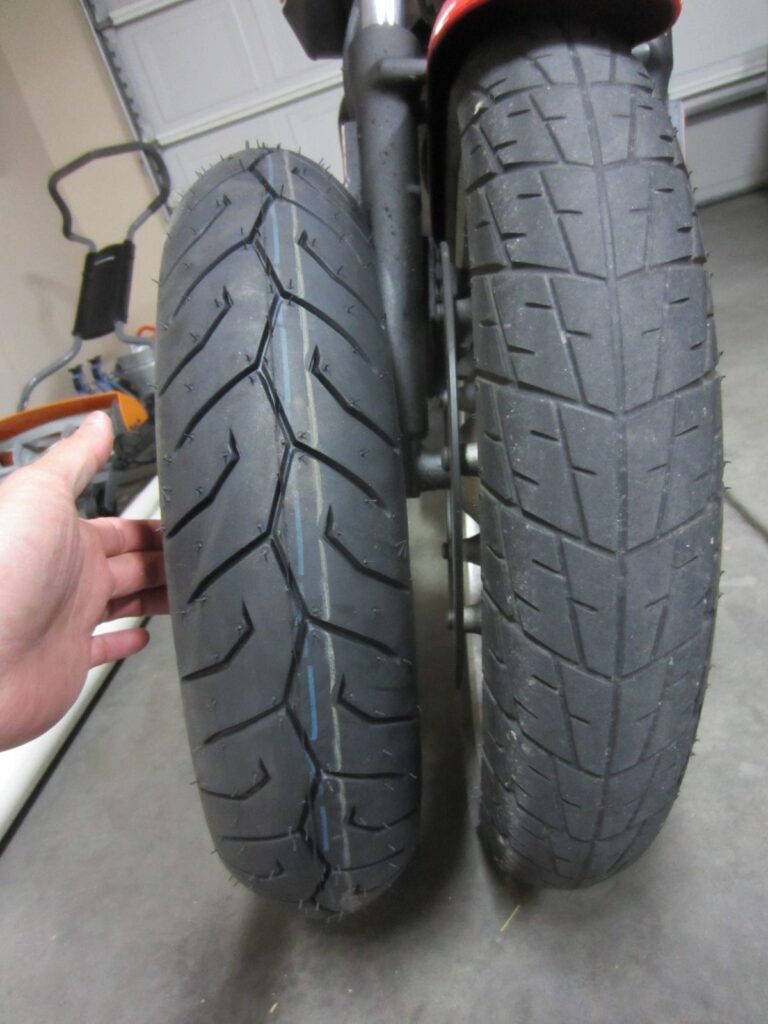
9. **Regularly Inspect for Damage
Even with the most meticulous maintenance and careful driving habits, tires are constantly exposed to road hazards. Small issues like minor cuts, embedded debris, or subtle bulges can escalate rapidly into major problems, potentially leading to dangerous blowouts or unexpected flats. A proactive approach to inspecting your tires for damage is therefore a non-negotiable step in maximizing their lifespan and ensuring your safety on the road.
Regular visual inspections should become a habit, ideally performed at least once a month or before any long journey. Pay close attention to the sidewalls and the tread surface. Look meticulously for any signs of damage: cuts, cracks, bulges, or punctures. Sidewall damage, in particular, is extremely critical. Any bubble or deep cut in the sidewall compromises the tire’s structural integrity, making it highly susceptible to sudden and catastrophic failure. If you spot sidewall damage, replace the tire immediately; it’s not worth the risk.
Beyond visible damage, systematically examine the tread grooves for embedded objects. Small rocks, pebbles, and even pieces of glass can get lodged in the tread, slowly working their way deeper into the tire over time. While not an immediate threat, these objects can eventually cause punctures or accelerate wear in localized areas. A simple flat-head screwdriver or a pick can be used carefully to dislodge them, but always exercise caution to avoid further damage to the tire itself.
Furthermore, don’t overlook unusual wear patterns during your inspections. While general wear is normal, feathering, cupping, or severe wear on just one side of the tread can indicate underlying mechanical issues such as improper alignment, unbalanced wheels, or worn suspension components. Catching these early allows for timely corrective action, preventing accelerated tire wear and potentially more expensive vehicle repairs down the line. A specialist’s keen eye for these subtle clues can be invaluable.
In the event of a minor puncture—such as from a nail in the central tread area—a tire sealant can offer a temporary solution to prevent a slow leak and get you to a repair shop safely. These sealants are not permanent fixes, nor are they suitable for large punctures or sidewall damage. They are designed for limited, temporary use. Professional repair is always the best course of action for any puncture to ensure the tire’s long-term safety and performance.
Read more about: Reclaim Your Haven: 14 Surprising Yard Attractants That Invite Snakes and How to Send Them Packing
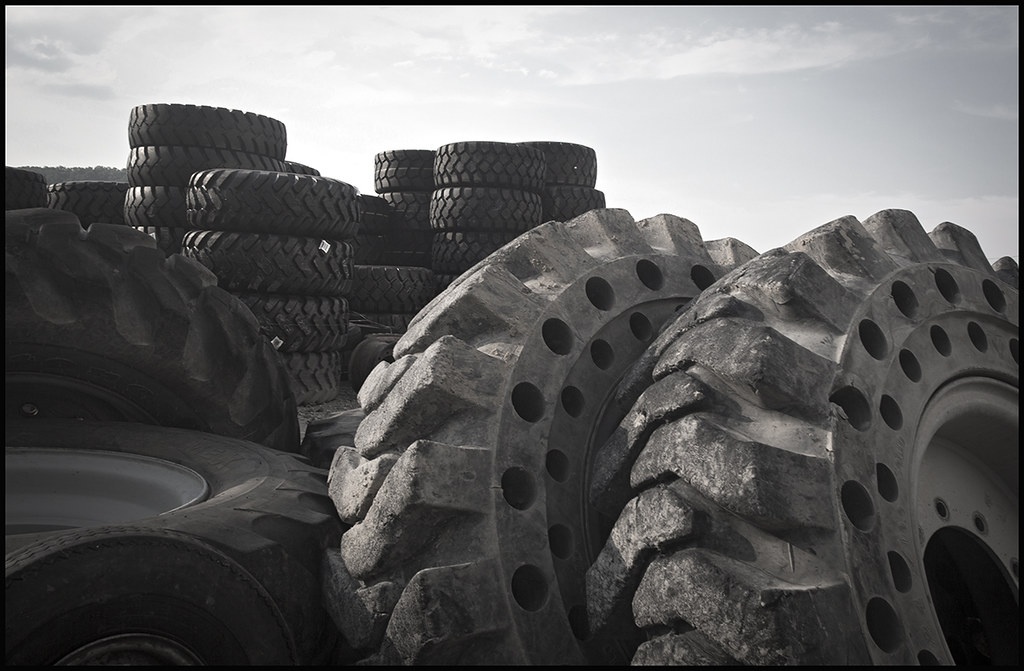
10. **Mind Your Driving Habits and Routes
While ‘avoid sudden starts and stops’ (as discussed earlier) covers a significant portion of driving behavior, the broader context of your driving habits and the types of roads you frequent play an equally crucial, yet often underestimated, role in tire longevity. It’s not just *how* you accelerate or brake, but *where* and *how* you navigate your daily routes that can either preserve or prematurely destroy your tires.
Potholes, gravel roads, and rough terrain are notorious tire destroyers. Repeated impacts with potholes can cause internal tire damage, leading to bulges, sidewall cracks, and even bent wheel rims. Gravel and unpaved roads introduce sharp debris that can easily puncture or abrade tire tread. Whenever possible, consciously choose smoother routes. If rough roads are unavoidable, reducing your speed dramatically helps to minimize the impact forces, giving your tires a fighting chance against harsh surfaces and extending their useful life.
Your approach to turns also significantly impacts tire wear. Sharp, tight turns, especially at speed, put immense lateral stress on the outside edges of your tires. This scrubbing action causes uneven wear, particularly on the shoulders of the tread blocks, which are designed to flex but not to be constantly abraded in this manner. Adopting a smoother, wider turning radius whenever practical reduces this stress, allowing the tire to roll more naturally through the corner and distributing wear more evenly across the tread.
Another common habit that damages tires is parking too close to curbs. Constantly rubbing against a curb can scrape and damage the tire sidewalls, leaving scuffs and potentially weakening the tire’s structure. This seemingly minor issue can become a slow, cumulative form of damage. Make a conscious effort to leave a few inches of space between your tires and the curb, protecting those vulnerable sidewalls from unnecessary abrasion and ensuring they remain intact for the life of the tire.
Even seemingly innocuous habits, like frequently driving over speed bumps too quickly, contribute to tire degradation. Each jolt places stress on the tire’s internal structure and sidewalls, alongside your suspension components. Developing an overall mindful driving style—one that prioritizes smooth inputs, anticipates road conditions, and avoids unnecessary harshness—is a powerful, free strategy to extract thousands of extra miles from your tire investment.
Read more about: Rating 10 Full-Size Trucks Proved to Last Beyond 320,000 Kilometers
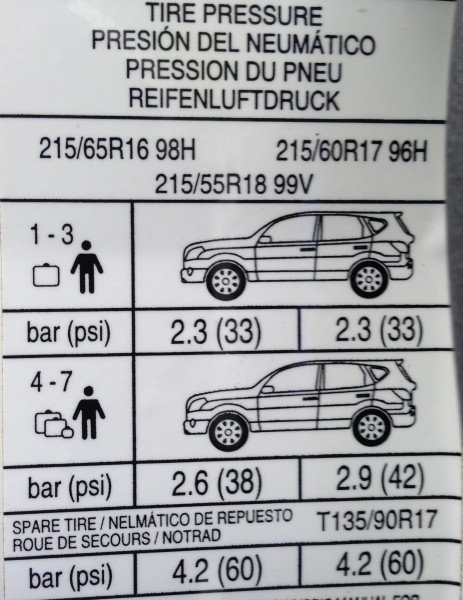
11. **Use Tire Protectants and Conditioners (If Needed)
Over time, tire rubber can degrade due to exposure to UV radiation, ozone, and road chemicals, leading to a dull appearance and, eventually, cracking or dry rot. While natural rubber contains anti-ozonants that migrate to the surface to provide some protection, external tire protectants and conditioners are often used to maintain the tire’s appearance and potentially offer an added layer of defense. However, their use requires a discerning approach to be truly beneficial rather than detrimental.
The key to using tire protectants effectively lies in choosing the right formula. Many traditional tire dressings are silicone- or oil-based, designed to give a high-gloss ‘wet look.’ While visually appealing, these can often attract dirt and dust, and some formulations may even leach out the tire’s natural protective compounds over time, potentially accelerating rubber degradation. A specialist’s tip is to opt for water-based, non-greasy conditioners. These typically offer a more natural, satin finish and are formulated to nourish the rubber without leaving a slick residue that could potentially fling onto your paintwork.
Furthermore, the frequency of application is crucial. Overusing tire protectants, even good quality ones, can have counterproductive effects. Applying a thick layer too often can lead to buildup that traps grime or, in some cases, interfere with the rubber’s natural ability to disperse its protective chemicals. Instead, follow the manufacturer’s instructions for application frequency, usually every few weeks or once a month, and always apply a thin, even coat. Excess product should be wiped off immediately to prevent uneven drying or attraction of unwanted particles.
Before applying any protectant, ensure your tires are thoroughly cleaned and dried. A dirty tire will prevent the protectant from properly adhering and forming an effective barrier. A clean surface allows the product to penetrate and condition the rubber more effectively. This preparatory step is vital for achieving both the desired aesthetic and protective benefits.
Ultimately, while tire protectants aren’t a substitute for proper inflation or rotation, they can play a supportive role in extending the aesthetic and superficial integrity of your tires. Used correctly, they can help prevent premature fading and cracking of the sidewalls, especially in regions with intense sun exposure, contributing to the overall longevity and healthy appearance of your tire set. The goal is to condition, not merely to shine.

12. Be Mindful of Seasonal Temperature Changes
Temperature is a silent, yet powerful, antagonist to tire longevity and performance. The extreme swings between scorching summer heat and bitter winter cold significantly impact tire rubber compounds, influencing everything from pressure stability to overall wear rates. Being proactively mindful of these seasonal temperature changes is essential for maintaining optimal tire health and ensuring safety throughout the year.
For drivers in regions experiencing distinct seasons, the use of appropriate seasonal tires is paramount. Winter tires, specifically engineered with softer rubber compounds and unique tread patterns, provide superior grip and flexibility in temperatures below 45°F (7°C), as well as in snow and ice. All-season tires, while versatile, harden in cold temperatures, reducing their traction and accelerating their wear in winter conditions. Conversely, using winter tires on hot summer pavement causes their soft compounds to wear down excessively fast, drastically shortening their lifespan and reducing fuel efficiency. Matching your tires to the season is a critical decision for longevity and safety.
Beyond tire type, extreme heat poses a direct threat to tire integrity. Hot pavement and high ambient temperatures increase the internal temperature and pressure within tires, accelerating the degradation of rubber compounds and making them more susceptible to damage. Underinflated tires are particularly vulnerable in hot weather because their flexing sidewalls generate even more heat, dramatically increasing the risk of a dangerous blowout. Therefore, during summer months or heatwaves, it’s vital to monitor tire pressure more frequently, ensuring they remain at the manufacturer’s recommended PSI to counteract heat-induced pressure increases and prevent excessive wear.
Conversely, cold temperatures cause tire pressure to drop—approximately 1 PSI for every 10°F decrease. This often leads to underinflation, which, as previously discussed, results in uneven wear on the shoulders and decreased fuel economy. Regular pressure checks during colder months are therefore equally important, allowing you to add air as needed to maintain proper inflation levels and mitigate cold-induced wear patterns. Ignoring these temperature-driven pressure fluctuations is a direct path to premature tire replacement.
Understanding how temperature affects your tires empowers you to make informed decisions, whether it’s swapping to seasonal tires, adjusting inflation, or simply driving with greater caution during extreme weather. These seemingly small considerations contribute significantly to the cumulative effort of doubling your tire life and enhancing overall vehicle safety and performance.
Read more about: The Celebrity Diet Trends Nutritionists Urgently Advise You to Avoid

13. **Invest in Quality Tires
While this article has focused extensively on maintenance and driving habits—actions largely within your control—it’s equally important to acknowledge the foundational role that the initial quality of your tires plays in their ultimate lifespan. There’s a common misconception that all tires are essentially the same, leading some to opt for the cheapest available option. However, this often proves to be a false economy, as cheap tires can cost you more in the long run due to their shorter lifespan and potentially compromised performance.
Investing in high-quality tires from reputable manufacturers offers several advantages. These tires typically utilize advanced rubber compounds and construction techniques that are designed for greater durability, better resistance to wear, and more consistent performance over time. This translates directly into more miles per dollar. While the upfront cost may be higher, the extended lifespan and superior safety characteristics often outweigh the initial savings of a cheaper alternative.
A key indicator of tire quality and a practical benefit for consumers is the mileage warranty. Many premium tires come with substantial mileage warranties, often ranging from 40,000 to 80,000 miles or more. These warranties serve as a manufacturer’s vote of confidence in their product’s longevity. They can also provide a financial safeguard, offering prorated replacements if your tires don’t last for their guaranteed mileage. This kind of assurance is rarely found with budget tires, which often offer minimal or no warranty coverage, leaving you fully exposed to the cost of premature wear.
Furthermore, buying the right tire for your specific needs and driving habits is paramount. If you do a lot of highway driving, investing in touring tires, which are engineered for comfort, quietness, and extended tread life, makes perfect sense. For those who prioritize performance, a dedicated performance tire will offer better grip and handling, albeit often with a shorter tread life. Similarly, trucks and SUVs may require tires with higher load ratings and more robust construction. Matching the tire to its intended use ensures you’re getting the optimal balance of performance, safety, and longevity, rather than simply settling for the lowest price point.
Ultimately, doubling your tire life isn’t just about relentless maintenance; it’s also about making smart, informed choices from the very beginning. By combining diligent care with an intelligent investment in quality tires tailored to your vehicle and lifestyle, you empower yourself to achieve the longest possible lifespan, ensuring a safer, more economical, and more enjoyable driving experience for many years to come. It truly is a comprehensive strategy for maximizing your tire mileage.
Read more about: Beyond the Glamour: When Film Productions Become ‘Problem Children’ and Test Every Crew’s Mettle
So there you have it – a comprehensive guide to getting the absolute most out of your tires. It’s clear that stretching your tire life isn’t about one magic fix, but a holistic approach combining proactive maintenance with mindful driving and informed choices. Each tip, from monitoring pressure to choosing the right tire, builds upon the others to create a powerful defense against premature wear. By embracing these expert-backed practices, you’re not just saving money; you’re investing in your safety, improving your vehicle’s performance, and ensuring a smoother journey on every road ahead. Drive smart, drive safe, and enjoy those extra miles!



